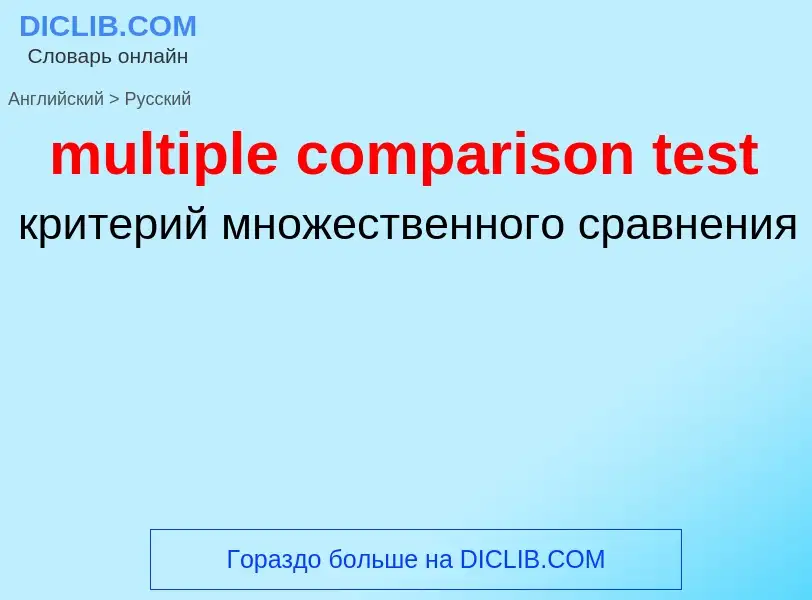Translation and analysis of words by ChatGPT artificial intelligence
On this page you can get a detailed analysis of a word or phrase, produced by the best artificial intelligence technology to date:
- how the word is used
- frequency of use
- it is used more often in oral or written speech
- word translation options
- usage examples (several phrases with translation)
- etymology
multiple comparison test - translation to russian
Definition
Wikipedia
In statistics, Duncan's new multiple range test (MRT) is a multiple comparison procedure developed by David B. Duncan in 1955. Duncan's MRT belongs to the general class of multiple comparison procedures that use the studentized range statistic qr to compare sets of means.
David B. Duncan developed this test as a modification of the Student–Newman–Keuls method that would have greater power. Duncan's MRT is especially protective against false negative (Type II) error at the expense of having a greater risk of making false positive (Type I) errors. Duncan's test is commonly used in agronomy and other agricultural research.
The result of the test is a set of subsets of means, where in each subset means have been found not to be significantly different from one another.
This test is often followed by the Compact Letter Display (CLD) methodology that renders the output of such test much more accessible to non-statistician audiences.

